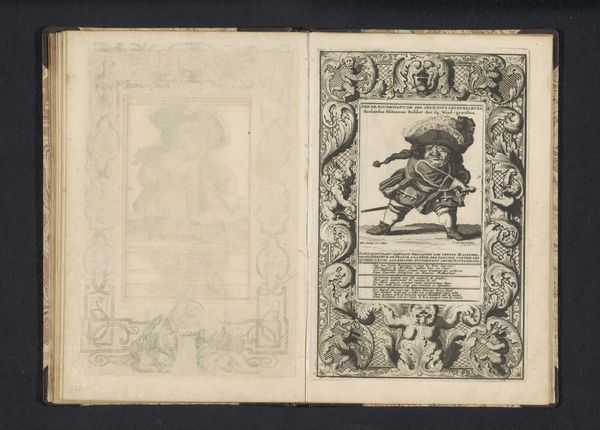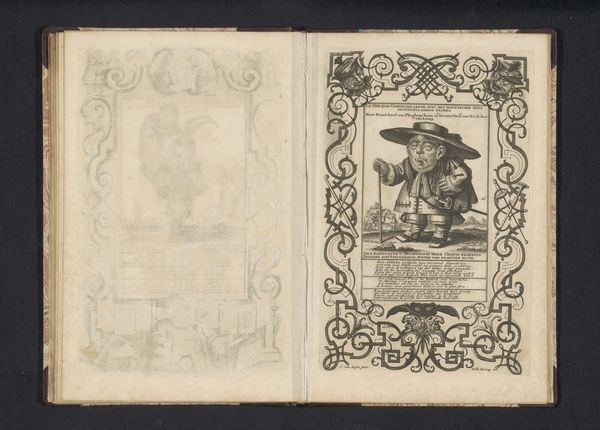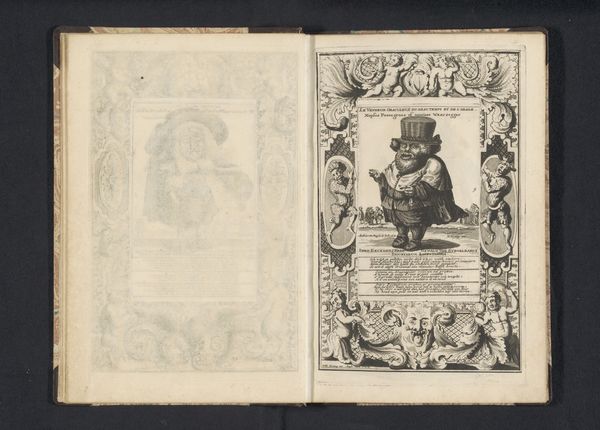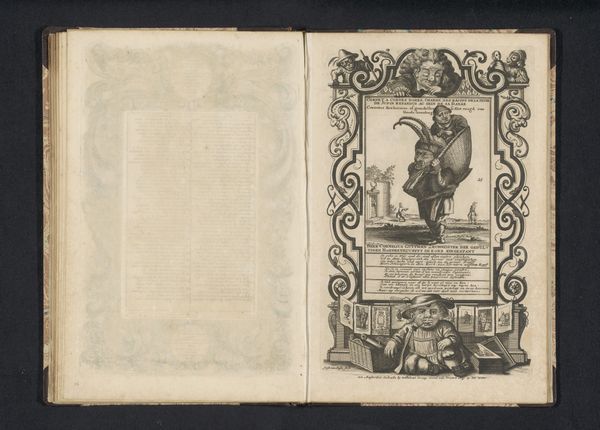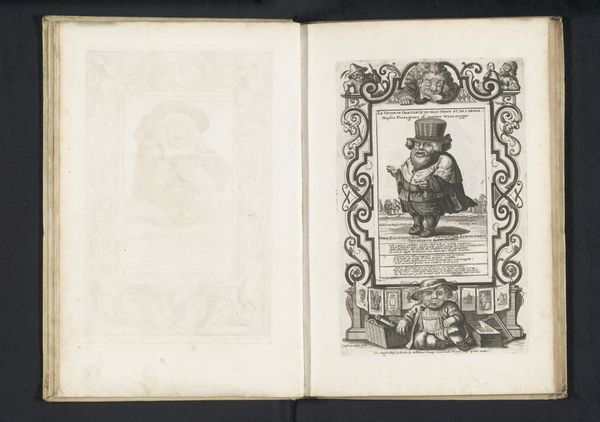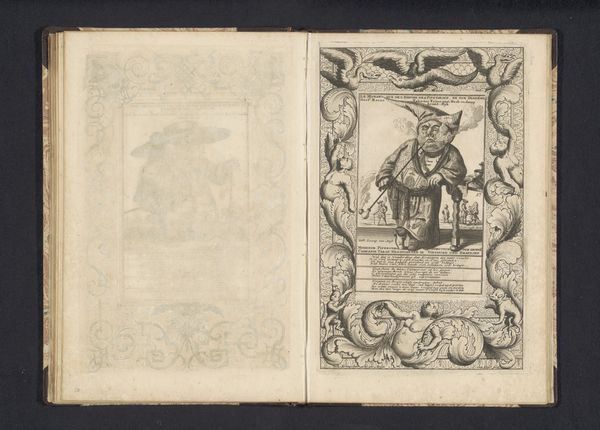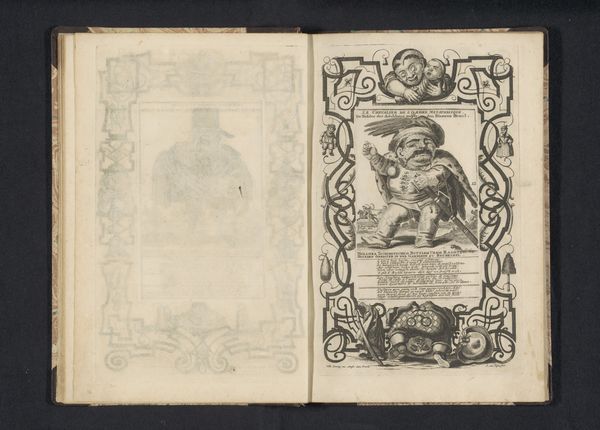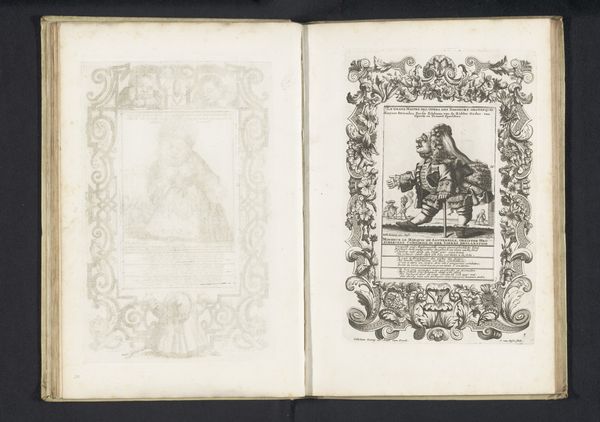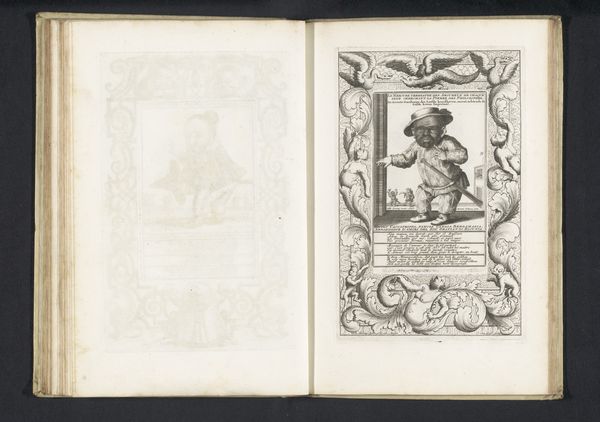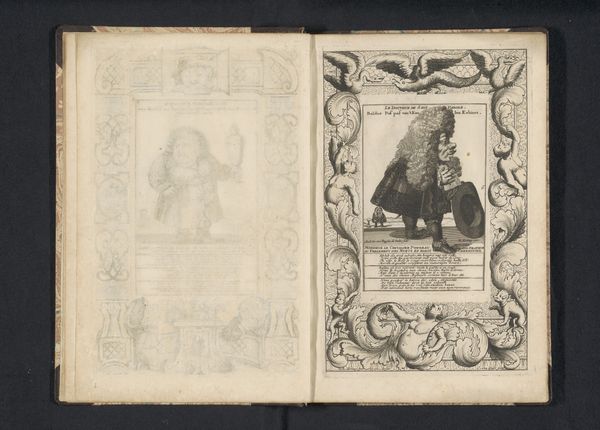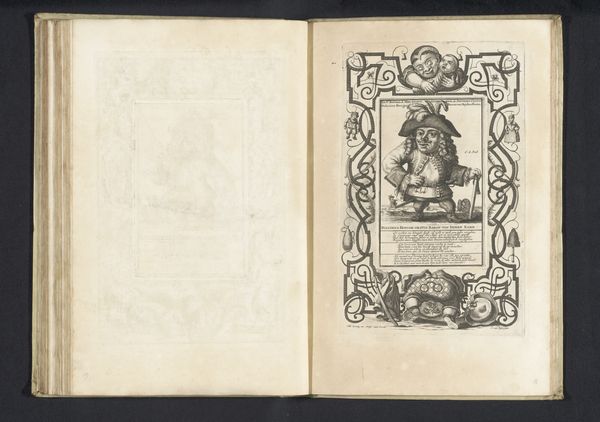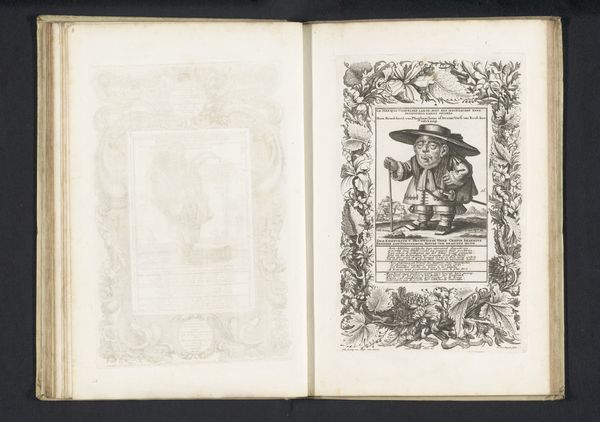
print, engraving
#
portrait
#
baroque
# print
#
caricature
#
folk-art
#
engraving
Dimensions: height 160 mm, width 105 mm, height 275 mm, width 172 mm
Copyright: Rijks Museum: Open Domain
Curator: Good morning. Here we have a look at an engraving titled "De dwerg Sinjoor Stríacadus" created in 1716 by Joost van Sassen. Immediately, the elaborate framing draws my eye; it's almost as important as the central figure. Editor: Indeed, the ornate baroque detailing around the caricature strikes a darkly humorous note. There's a real visual tension in how the crisp, dark lines of the engraving define the figure within. How do you perceive the function of the print in its period? Curator: Given it’s a print, the materials point to relatively wide circulation. The themes of caricature and folk art suggest it likely served as a form of popular entertainment or even social commentary, making art accessible and part of everyday life for a broader audience. It challenges the traditional hierarchies of art consumption. Editor: But let’s look closer at the printmaking. Van Sassen clearly controlled light and shadow expertly to give weight to the figure, and the detail achieved via engraving allows fine nuances, like the folds of the clothing, to imply more about his identity. What narrative is conjured through these elements of representation? Curator: Considering its creation in 1716, such portraits, even those employing caricature, could reflect on socio-political issues through humor. This piece could allude to critiques of power or the portrayal of specific societal types in a playful yet critical way, distributed widely due to the very nature of printmaking. Editor: The print undeniably holds my gaze through its precise rendering of surfaces and textures – notice the suggestive quality of the wig. There is almost a tactile sensation despite the medium, achieved only through Van Sassen’s deliberate hand. I would suggest his process underlines artistic intent, beyond mere social dissemination. Curator: Precisely, each print from the plate demonstrates accessibility but it still shows considered labour. These engravings offer insights into the cultural and economic life of the era. The interplay between art and commerce becomes visible here. Editor: I agree! Reflecting on our observations, the print stands out as a study in sharp contrasts, while simultaneously hinting at a rich narrative and an even richer level of artistic and social interplay. Curator: Exactly. Thinking about art not only for what it is but also for what it does within a culture shifts how we interpret both its meaning and value. Thank you!
Comments
No comments
Be the first to comment and join the conversation on the ultimate creative platform.
